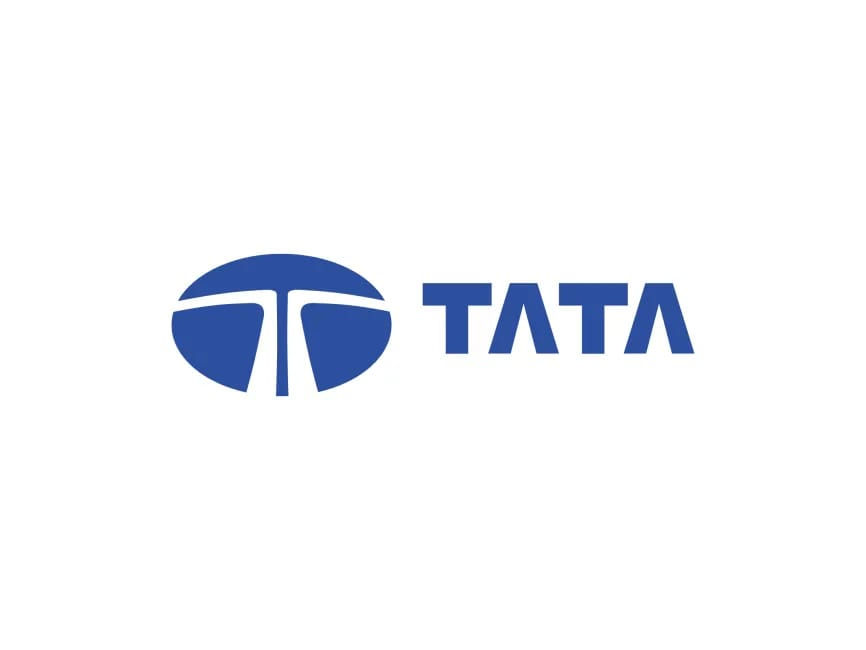Cyber Security Training
The Cyber Security Training Program provides hands-on training in key areas like network security, ethical hacking, penetration testing, and incident response. Participants will learn to use security tools and techniques to protect systems and data from cyber threats through real-world simulations.
Ideal for IT professionals and those interested in cyber security, this program offers flexible learning, expert mentorship, and an industry-recognized certification, preparing learners to effectively defend against cyber threats.
4.8
Why Choose Skillairo?
Expert-Led Training
Internship experience
Industry Relevent Curriculum
Hands-On Projects
LMS Access
Comprehensive Tools and Technologies
professional certifications
Career Support
TRAINING PATH
SKILLS COVERED
INDUSTRY PROJECTS
Vulnerability Scanner

Develop a tool that scans systems or networks for security vulnerabilities. Use algorithms to detect common security flaws, such as outdated software versions or misconfigurations, and provide recommendations for mitigation. The key component include 1.User-Friendly Interface The UI includes an intuitive dashboard for scanning configurations, vulnerability reports, and real-time monitoring. Features like customizable scan options, detailed reports, and risk visualizations enhance usability for administrators. 2.Secure and Scalable Backend The backend incorporates a database of known vulnerabilities, updated regularly from sources like CVE (Common Vulnerabilities and Exposures). It integrates scanning engines that utilize protocols such as TCP/IP and HTTP for system evaluation. 3.Essential Functional Components Core functionalities include vulnerability detection, risk assessment, and reporting. The system performs scans across networks, applications, and operating systems, providing detailed descriptions and remediation recommendations. 4.Enhanced Vulnerability Detection Features Advanced features include automated scheduling for regular scans, integration with SIEM (Security Information and Event Management) systems, and AI-driven analytics for prioritizing critical vulnerabilities. Penetration testing support offers deeper insights into system weaknesses. 5.Third-Party Tools and Libraries Tools like Nmap, OpenVAS, or Nessus are commonly used for scanning. APIs such as Shodan or VirusTotal provide supplementary vulnerability data. Libraries like Scapy or Metasploit enhance custom scanning capabilities. 6.Modular System Design The system follows a modular architecture with separate components for scanning engines, threat databases, and reporting tools. This design ensures scalability, real-time updates, and effective integration with third-party security systems. Technologies Python/Java (for backend development), React/Angular (for frontend development), MySQL/MongoDB (for vulnerability database), Nmap/OpenVAS/Metasploit (for scanning engines), Elasticsearch/Kibana (for reporting and analytics), and AWS/GCP/Azure (for cloud hosting). Outcome A Vulnerability Scanner enables organizations to proactively identify and address security flaws, reducing the risk of data breaches and cyberattacks. It strengthens overall cybersecurity posture, ensuring compliance with industry standards and protecting critical assets.
Firewall Simulation

Create a simulation of a firewall that can filter incoming and outgoing network traffic based on predefined security rules. Implement features such as packet filtering, intrusion detection, and real-time traffic analysis. The key component include 1.User-Friendly Interface The interface includes an intuitive dashboard for managing firewall rules, monitoring network traffic, and generating security reports. Interactive elements such as drag-and-drop policy creation, real-time alerts, and visual traffic maps enhance usability. 2.Secure and Scalable Backend The backend integrates a robust database to store configurations, traffic logs, and policy rules. It supports high-speed processing to analyze and filter packets in real time, ensuring scalability and reliability. 3.Essential Functional Components Core functionalities include packet filtering, network address translation (NAT), and intrusion detection and prevention. The system allows the creation of inbound and outbound rules and supports protocols like TCP, UDP, and ICMP. 4.Enhanced Traffic Control Features Advanced features include deep packet inspection, customizable rule sets, and integration with threat intelligence databases. Real-time analytics and AI-driven insights help identify and mitigate potential vulnerabilities. 5.Third-Party Tools and Libraries Tools like Wireshark for packet analysis and Snort for intrusion detection are integrated. APIs from threat intelligence providers enhance the system’s ability to identify malicious activities. 6Modular System Design The architecture follows a modular design, separating components like traffic filtering, rule management, and reporting. This ensures flexibility, scalability, and ease of integration with other network security systems. Technologies Python/Java (for backend development), React/Angular (for frontend development), SQLite/MySQL (for database), Wireshark/Snort (for packet analysis and intrusion detection), Docker (for containerized simulation), and AWS/GCP/Azure (for cloud hosting). Outcome A Firewall Simulation helps users understand network security principles, experiment with firewall rules, and evaluate the impact of policies on traffic control. It provides hands-on experience in securing networks and enhances preparedness against cyber threats.
Password Cracking and Strength Evaluation

Build a tool to assess the strength of passwords by attempting to crack them using brute force or dictionary attacks. Evaluate password security based on length, complexity, and resistance to common cracking methods. 1. Data Collection & Preprocessing: Gather transaction data, including transaction amount, time, location, and customer details. Clean the data by handling missing values, encoding categorical variables, and normalizing numerical features. 2. Feature Engineering: Extract relevant features such as transaction frequency, spending behavior, and location-based patterns to help identify anomalies that may indicate fraud. 3. Modeling & Training: Apply machine learning algorithms such as Logistic Regression, Random Forest, XGBoost, and Deep Learning (e.g., Autoencoders) to classify transactions as fraudulent or legitimate. 4. Imbalanced Data Handling: Use techniques like oversampling (SMOTE), undersampling, or anomaly detection methods to address the class imbalance problem (fraudulent transactions being much less frequent than legitimate ones). 5. Model Evaluation & Optimization: Evaluate the model’s performance using metrics such as Precision, Recall, F1-Score, and ROC-AUC to ensure it effectively detects fraud while minimizing false positives. 6. Real-Time Fraud Detection System: Deploy the trained model into a real-time fraud detection system, capable of flagging suspicious transactions as they occur and triggering alerts. Technologies: Python, Scikit-learn, XGBoost, Keras, TensorFlow, SMOTE, Real-time data integration (APIs). Outcome: A fraud detection system that helps credit card companies identify and prevent fraudulent transactions, protecting customers and minimizing financial losses.
Secure File-Sharing Application

Design a secure file-sharing application that encrypts files before transmission and ensures privacy during storage. Implement encryption algorithms (e.g., AES) and secure authentication protocols to protect data integrity. 1. Data Collection & Preprocessing: Gather data on historical flight prices, customer booking behavior, competitor prices, flight routes, weather conditions, and holidays. Clean and preprocess the data by handling missing values, encoding categorical features, and scaling numerical variables. 2. Feature Engineering: Extract relevant features such as time to departure, seasonality, day of the week, and competitor pricing to understand their impact on demand and pricing strategies. 3. Demand Forecasting: Use time series forecasting models like ARIMA, Prophet, or machine learning models (Random Forest, XGBoost) to predict flight demand based on historical trends, economic conditions, and special events. 4. Price Optimization Models: Develop a pricing optimization model using machine learning algorithms like Linear Regression, Random Forest, and Reinforcement Learning to suggest the best price point for each flight, maximizing revenue while considering demand elasticity. 5. Dynamic Pricing Strategy: Implement a dynamic pricing system that adjusts flight prices in real-time based on factors such as remaining seats, booking trends, competitor prices, and time to departure. 6. Model Evaluation & Optimization: Evaluate the model’s performance using metrics such as Mean Absolute Error (MAE) and Root Mean Squared Error (RMSE) for demand prediction, and assess the revenue impact of price optimization. 7. Dashboard & Reporting: Develop a dashboard to visualize pricing trends, revenue forecasts, and the impact of price changes. Use tools like Tableau or Plotly Dash for real-time insights. Technologies: Python, Scikit-learn, XGBoost, ARIMA, Prophet, Reinforcement Learning, Tableau, Plotly Dash. Outcome: A price optimization system that helps airlines set competitive prices, maximize revenue, and enhance customer satisfaction by adjusting prices based on real-time demand and market conditions.
Phishing Attack Detector

Develop a system that can detect phishing attempts in emails or websites. Use machine learning models to analyze patterns in URLs, email content, or web page characteristics to classify phishing attempts. The key component include 1.User-Friendly Interface The system features a dashboard for monitoring phishing attempts, analyzing suspicious links, and generating alerts. It provides easy access to reports and tools for investigating flagged content. 2.Secure and Scalable Backend The backend incorporates databases for storing phishing signatures, machine learning models, and historical data of flagged phishing attempts. It ensures efficient handling of large-scale data analysis and real-time threat detection. 3.Essential Functional Components The detector includes URL analysis, email header inspection, and content-based detection techniques. It also supports identifying suspicious attachments and blacklisting phishing domains. 4.Advanced Threat Detection Features The system leverages machine learning to classify phishing attempts, natural language processing (NLP) for analyzing email content, and heuristic analysis for identifying novel threats. Integration with threat intelligence feeds provides real-time updates on emerging threats. 5.Third-Party Tools and Libraries Tools like TensorFlow or PyTorch are used for machine learning models, Beautiful Soup for HTML parsing, and APIs such as VirusTotal or PhishTank for validating phishing links. Libraries for email parsing and URL inspection enhance detection capabilities. 6.Modular System Design The architecture separates components for data ingestion, model training, threat detection, and reporting. This modularity ensures flexibility, scalability, and ease of maintenance. Technologies Python/JavaScript (for backend development), React/Angular (for frontend development), TensorFlow/PyTorch (for machine learning), MongoDB/PostgreSQL (for databases), Beautiful Soup/Scapy (for HTML and network analysis), and AWS/GCP/Azure (for cloud hosting). Outcome The Phishing Attack Detector helps organizations and individuals identify and block phishing attempts, thereby protecting sensitive information. It enhances cybersecurity awareness and reduces the risk of financial and reputational damage caused by phishing attacks.
CERTIFICATIONS
Get certified in Cyber Security through our program and receive both a Training Completion Certificate and an Internship Completion Certificate. The prestigious Top Performer Certificate is awarded to outstanding students who performed exceptionally well during both the training and internship phases.



PRICING PLAN
Add terms and conditions
Best Value
Self-Paced Program
5,000
Valid until canceled
✔️ Pre-recorded videos
✔️ 6+ Hours of Live Classes by Industry Experts
✔️ Doubt Sessions
✔️ Real-time Projects
✔️ Certifications
✔️ One-on-one Doubt Sessions
❌ Interview Assistance
❌ Placement Guidance
Choose your pricing plan
Find one that works for you
Add terms and conditions
Best Value
Mentor Led Program
9,000
Valid until canceled
✔️ Pre-recorded videos
✔️8+ Hours of Live Classes by Industry Experts
✔️ Doubt Sessions
✔️ Real-time Projects
✔️ Certifications
✔️ One-on-one Doubt sessions
✔️ Interview Assistance
❌ Placement Guidance
Choose your pricing plan
Find one that works for you
Add terms and conditions
Best Value
Advanced Program
18,000
Valid until canceled
✔️ Pre-recorded videos
✔️ 24+ Hours of Live Classes by Industry Experts
✔️ Doubt Sessions
✔️ Real-time Projects
✔️ Certifications
✔️ One-on-one Doubt session
✔️ Interview Assistance
✔️ Placement Guidance
Choose your pricing plan
Find one that works for you
CYBER SECURITY INDUSTRY TRENDS
These trends underscore India's expanding role in the global Cyber Security landscape, supported by a robust IT industry and a growing pool of skilled professionals.
30% Annual Growth Rate
India's cybersecurity market is experiencing significant growth, with projections indicating substantial expansion in the coming years.
In 2023, the Indian cybersecurity market reached approximately $6 billion, reflecting a compound annual growth rate (CAGR) of over 30% from 2019 to 2023.
Looking ahead, the market is expected to account for 5% of the global cybersecurity market by 2028.

Other key industry trends
-
A significant majority of organizations have invested in artificial intelligence and machine learning (AI/ML) technologies, with 97% adopting these technologies, and 84% have invested in cloud solutions.
-
The cybersecurity market in India is growing rapidly, with an estimated value of USD 2.7 billion in 2020. The market is projected to expand at a CAGR of 13% from 2021 to 2028, driven by the increasing need for advanced cybersecurity solutions to combat cyberattacks, data breaches, and privacy concerns.
Source: Grand View Research, IMARC
INR 4.5-25 L Annual Salary
In India, cybersecurity professionals earn an average annual salary of approximately ₹1,150,000, with total compensation around ₹1,350,000 per year. Entry-level positions typically start at ₹4.5 lakhs per year, while experienced professionals can earn up to ₹25 lakhs annually. Salaries vary by location, with cybersecurity experts in Gurgaon earning an average of ₹14,00,000 per year, Bengaluru at ₹12,50,000, and Hyderabad at ₹12,00,000.
The cybersecurity industry in India is experiencing significant growth, with projections indicating a 20-25% increase in job opportunities across various sectors by 2025, driven by increasing digital transformation and the growing need for security in both public and private sectors.


OUR OFFICIAL TRAINING PARTNERS
Through partnerships with top-tier institutions, we provide specialized training that is designed to support students' academic and professional growth.

IIM KASHIPUR
AGNITRAYA
OUR ALUMNI WORK AT
Our alumni are already pushing boundaries in their fields. Former students are excelling in high-profile industries and influencing the landscape of tomorrow.










































RECOGNITION FROM
Frequently Asked Questions





























